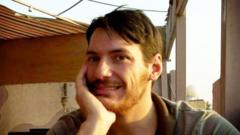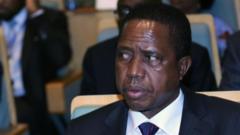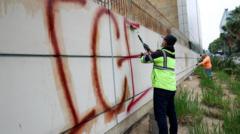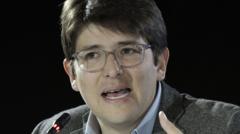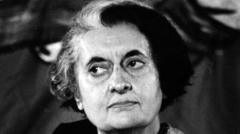Following the abrupt collapse of Assad's regime in December 2024, Syrians are experiencing unprecedented social freedoms, but the potential for a return to authoritarianism and the rise of religious influence raises alarms about the nation’s future.
The Fragile Freedom of Post-Assad Syria: A Nation at a Crossroads

The Fragile Freedom of Post-Assad Syria: A Nation at a Crossroads
As Syrians celebrate newfound freedoms following the fall of Bashar al-Assad, concerns about the country’s democratic future and cultural integrity loom large.
In the early morning of December 8, 2024, I stood at the Lebanese border, eager to enter Syria for the first time in over a decade. With the fall of Bashar al-Assad, who ruled for 24 years, a wave of optimism swept through the country as opposition forces seized key cities, including Aleppo and Damascus. For many, including myself, this was the first moment of genuine freedom after decades of dictatorship, disappearances, and widespread repression, particularly during the brutal civil war that erupted in 2011.
As I crossed the border, the festive atmosphere was palpable. Rebel fighters fired celebratory gunshots into the air, and jubilant crowds congregated in the streets, embracing their newly found liberties. For weeks, Umayyad Square, a central hub in Damascus, transformed into a vibrant space where discussions about the future were open and free—a stark contrast to the oppressive silence that marked the Assad era.
However, this exhilarating freedom comes with complexities and uncertainties. Now, four months after Assad’s downfall, there are burgeoning concerns about the fate of these new social liberties and what political structures might emerge. Will the enthusiasm of the people translate into a stable democracy, or could the newly gained freedoms be short-lived?
Gathering at Rawda Café, an establishment previously known for its political repression, intellectuals engage in open dialogues about culture and politics. Many of the café's patrons are returnees, including journalist Mohammad Ghannam, who spent years in prison under Assad. His excitement about coming back to a liberated Syria stands in stark contrast to the silencing he experienced in past years. "Now," he says, "freedom of speech isn't just a dream."
Yet, while initial strides toward freedom seem promising, the question remains whether such openness can endure. Concerns over the government’s intentions linger. Although the interim president Ahmed al-Sharaa professes a commitment to democracy, critics point out a lack of transparency and representation in governance, sparking fears of authoritarianism creeping back into Syrian society.
The paradigm of power is shifting, yet the new government must contend with entrenched social beliefs, including those of religious influence. Many cultural and artistic expressions that flourished during Assad's demise face potential restrictions under an increasingly conservative atmosphere. Despite a political landscape fraught with uncertainty, artists and cultural advocates strive to safeguard the arts and preserve a diverse cultural identity.
Meanwhile, the struggle for women’s rights hangs in the balance with apprehensions about a shift towards stricter interpretations of Islamic law threatening established freedoms. Observers note incidents that signal the rise of such religious influences, raising alarms over historical progress being undone.
Tensions are palpable across various regions of Syria, especially in coastal cities where violence related to sectarian divisions is surging. As the Kurdish-led Syrian Democratic Forces continue to manage displaced persons from the era of ISIS, the national identity of Syria must grapple with competing visions for its future.
The existential question looming large is whether Syrians can sustain their hard-fought freedoms or if they will once again find themselves under authoritarian control. As the interim government attempts to carve out a new path, the collective memory of oppression is a powerful reminder that the road to true democracy remains fraught with danger and challenges. The fragility of the current moment underscores the importance of remaining vigilant and proactive in the face of uncertain political dynamics that could reshape the future of Syria.
As I crossed the border, the festive atmosphere was palpable. Rebel fighters fired celebratory gunshots into the air, and jubilant crowds congregated in the streets, embracing their newly found liberties. For weeks, Umayyad Square, a central hub in Damascus, transformed into a vibrant space where discussions about the future were open and free—a stark contrast to the oppressive silence that marked the Assad era.
However, this exhilarating freedom comes with complexities and uncertainties. Now, four months after Assad’s downfall, there are burgeoning concerns about the fate of these new social liberties and what political structures might emerge. Will the enthusiasm of the people translate into a stable democracy, or could the newly gained freedoms be short-lived?
Gathering at Rawda Café, an establishment previously known for its political repression, intellectuals engage in open dialogues about culture and politics. Many of the café's patrons are returnees, including journalist Mohammad Ghannam, who spent years in prison under Assad. His excitement about coming back to a liberated Syria stands in stark contrast to the silencing he experienced in past years. "Now," he says, "freedom of speech isn't just a dream."
Yet, while initial strides toward freedom seem promising, the question remains whether such openness can endure. Concerns over the government’s intentions linger. Although the interim president Ahmed al-Sharaa professes a commitment to democracy, critics point out a lack of transparency and representation in governance, sparking fears of authoritarianism creeping back into Syrian society.
The paradigm of power is shifting, yet the new government must contend with entrenched social beliefs, including those of religious influence. Many cultural and artistic expressions that flourished during Assad's demise face potential restrictions under an increasingly conservative atmosphere. Despite a political landscape fraught with uncertainty, artists and cultural advocates strive to safeguard the arts and preserve a diverse cultural identity.
Meanwhile, the struggle for women’s rights hangs in the balance with apprehensions about a shift towards stricter interpretations of Islamic law threatening established freedoms. Observers note incidents that signal the rise of such religious influences, raising alarms over historical progress being undone.
Tensions are palpable across various regions of Syria, especially in coastal cities where violence related to sectarian divisions is surging. As the Kurdish-led Syrian Democratic Forces continue to manage displaced persons from the era of ISIS, the national identity of Syria must grapple with competing visions for its future.
The existential question looming large is whether Syrians can sustain their hard-fought freedoms or if they will once again find themselves under authoritarian control. As the interim government attempts to carve out a new path, the collective memory of oppression is a powerful reminder that the road to true democracy remains fraught with danger and challenges. The fragility of the current moment underscores the importance of remaining vigilant and proactive in the face of uncertain political dynamics that could reshape the future of Syria.




